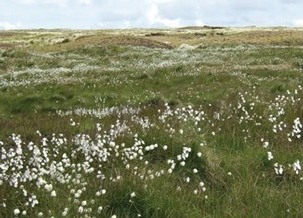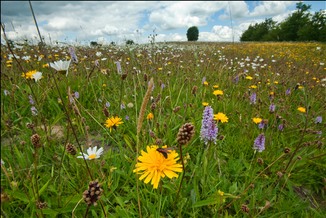

Biodiversity
Action
Plan
Designated sites. Barnsley’s rich and diverse countryside includes areas of particular importance for wildlife; a good number of sites have important, distinctive and threatened habitats and species.
Certain sites recognised nationally, are given special legal or statutory protection; these include Sites of Special Scientific Interest (SSSI).
Some have been identified as having local significance, these are designated as Local Wildlife Sites (LWS).


Pye Flatts Meadow: Granville Danny Clarke FRSA
Please note:
Designated sites are often on private land.
There is no automatic right of public access as a result of their status.
Local Nature Reserves. In addition to the sites designated as SSSI or LWS, some sites have been registered with Natural England as Local Nature Reserves (NLR) by Barnsley Council. These are recognised for planning purposes and byelaws may be set to give them some protection against damage. They have conservation management arrangements and at least some public access. Not all nature reserves are registered as Local Nature Reserves.
Does the Green Belt help biodiversity?
Designation as Green Belt within a Local Plan may help the environment and incidentally promote biodiversity but this is not its primary aims which are to:
- Check the unrestricted sprawl of large built-up areas
- Prevent neighbouring towns from merging into one another
- Assist in urban regeneration, by encouraging the recycling of derelict and other urban land
- Assist in safeguarding the countryside from encroachment.
These are achieved by planning restrictions on development in the Green Belt.
The origins of the Green Belt are in the Town and Country Planning Act 1947 that allowed local authorities to include green belt proposals in their development plans.
Links to information on designated sites:
Designated Sites